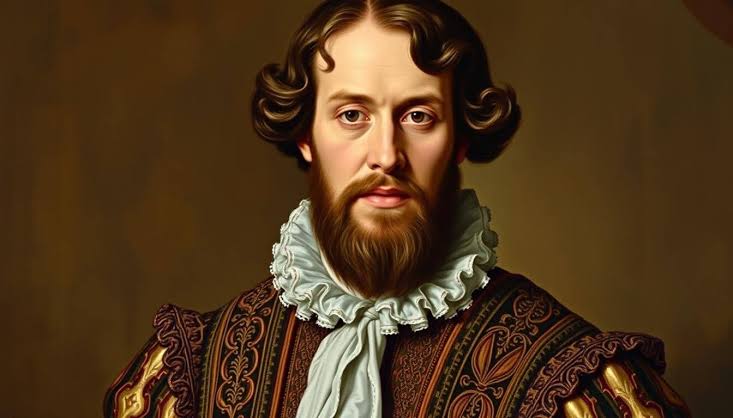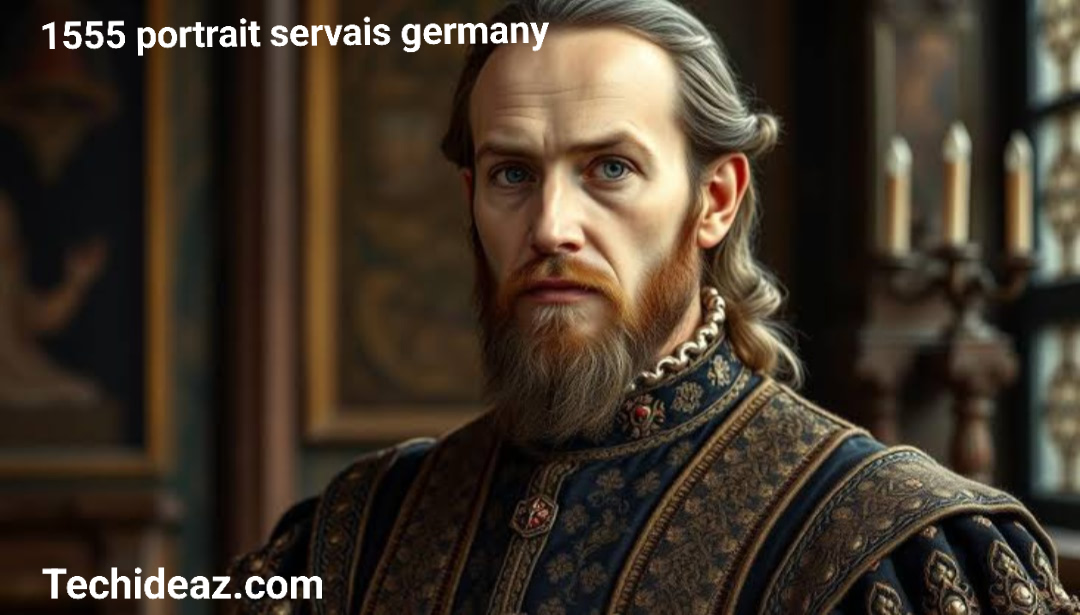The year 1555 marks a significant moment in European history, particularly in the context of art and portraiture. The political, religious, and cultural climate of this period provided the backdrop for a range of artistic achievements, including portraiture that sought to capture the individual in ways previously unexplored. One particular subject from this period, known as the 1555 portrait of Servais in Germany, provides fascinating insight into the confluence of history, art, and identity.
The Context: Germany in the 16th Century
To fully understand the significance of the 1555 portrait of Servais in Germany, it’s crucial to consider the historical backdrop of Germany in the mid-16th century. During this period, the Holy Roman Empire was a complex political entity that spanned much of Central Europe. The empire was marked by a delicate balance of power between various princely states, territories, and religious factions.
The Protestant Reformation, sparked in 1517 by Martin Luther’s Ninety-Five Theses, had transformed the religious landscape of the empire. The Peace of Augsburg, signed in 1555, allowed for a fragile truce between Catholic and Protestant territories within the empire. This climate of religious tension and shifting allegiances permeated every aspect of life, including art.
The 1555 portrait of Servais, though not tied directly to the Peace of Augsburg, is emblematic of the era’s cultural and artistic atmosphere. Portraits in this period were not merely images of individuals; they were often political statements, symbols of power, and markers of religious affiliation. Artists, especially in the German regions, were tasked with navigating these complexities while producing works that were rich in symbolism and meaning.
Servais: The Subject Behind the Portrait
One of the critical questions that art historians and researchers must grapple with is the identity of Servais. While specific details about the individual Servais portrayed in the 1555 portrait are somewhat elusive, there are several clues to his background that can be deduced from the artistic style, attire, and overall composition of the portrait.
The name “Servais” suggests that the subject may have been of French or Flemish origin, as it was a common name in these regions during this time. However, given the portrait’s association with Germany, it’s plausible that Servais was an expatriate, a merchant, or a nobleman who had settled in one of the German-speaking territories of the Holy Roman Empire.
One of the striking features of this period’s portraiture is the emphasis on personal wealth and status. In the 1555 portrait of Servais in Germany is likely depicted in fine clothing, possibly adorned with symbolic items like a signet ring, which would have signified his social standing. The background of the portrait, as well as any objects or symbols within the composition, would have been carefully chosen to highlight his wealth, political connections, or religious affiliation.
Portraiture in 16th-Century Germany
Portraits in the 16th century served as both personal and political tools. As the Renaissance blossomed across Europe, the art of portraiture evolved into a sophisticated method of communication, allowing patrons to showcase their status, power, and piety. In Germany, portraiture was heavily influenced by two major traditions: the Northern Renaissance and the Italian Renaissance.

The Northern Renaissance, particularly in Germany, was known for its attention to detail, realism, and the use of symbolism. Artists like Albrecht Dürer, Lucas Cranach the Elder, and Hans Holbein the Younger were instrumental in developing portraiture that captured not just the likeness of the subject, but also their personality, status, and beliefs. These artists often employed intricate details in their compositions, using clothing, objects, and background settings to communicate aspects of the sitter’s life.
The Italian Renaissance, on the other hand, introduced a focus on classical ideals, proportion, and harmony in composition. While German artists were not as focused on idealizing their subjects as their Italian counterparts, they nonetheless absorbed many of these techniques, creating a unique blend of realism and idealization in their portraiture.
In the case of the 1555 portrait of Servais in Germany, we can see the influence of both traditions. The artist likely employed meticulous attention to detail, ensuring that Servais’ attire, expression, and surroundings were rendered with precision. At the same time, the portrait may have also incorporated elements of idealization, presenting Servais in a slightly more refined or dignified manner than he may have appeared in everyday life.
Artistic Techniques and Symbolism in the Portrait
The 1555 portrait of Servais, like many portraits from this period, would have been rich in symbolism. Every detail in the composition, from the type of fabric worn by the subject to the objects placed in the background, would have carried significance.
One of the most common symbols found in Renaissance portraiture was the inclusion of books, which often signified learning or religious devotion. Servais may have been depicted with a book, particularly if he was a man of education or a devout Christian. Similarly, items like globes, maps, or instruments could have suggested a connection to trade, exploration, or science.
The use of light and shadow in the portrait would have also played an important role in conveying the subject’s personality or mood. In the Northern Renaissance tradition, artists often employed strong contrasts between light and dark, known as chiaroscuro, to create a sense of depth and realism. This technique could have been used in the 1555 portrait of Servais in Germany’ facial features or to draw attention to certain elements of the composition.

The Legacy of the 1555 Portrait
While the 1555 portrait of Servais may not be as widely known as other works from this period, it remains an important example of mid-16th-century portraiture in Germany. The portrait encapsulates many of the artistic trends of the time, from its detailed realism to its use of symbolism and political undertones.
Moreover, the portrait serves as a valuable historical document, offering insights into the life of an individual who lived during a period of significant religious, political, and cultural change. The fact that Servais commissioned or was the subject of such a portrait suggests that he was a person of some importance, whether as a merchant, nobleman, or other prominent figure in German society.
Today, the 1555 portrait of Servais continues to be studied by art historians and researchers who are interested in the intersection of art, history, and identity in Renaissance Europe. The portrait stands as a testament to the enduring power of portraiture to capture not just the physical likeness of a person, but also the cultural and historical context in which they lived.
Conclusion
The 1555 portrait of Servais in Germany represents more than just a depiction of an individual; it is a window into a particular time and place in European history. As an artistic work, it embodies the stylistic developments of the Northern Renaissance, showcasing a blend of detailed realism, symbolism, and subtle idealization. The portrait also provides valuable insights into the socio-political climate of 16th-century Germany, a time when religion, politics, and personal identity were deeply intertwined.
Through careful analysis of the portrait’s composition, symbolism, and historical context, we gain a deeper understanding of Servais as an individual and the world in which he lived. This portrait, like many from the Renaissance, continues to resonate with modern audiences, reminding us of the timeless nature of art’s ability to capture human identity and experience.
FAQs About the 1555 Portrait of Servais in Germany
Who was Servais, the subject of the 1555 portrait?
While the exact identity of Servais remains somewhat unclear, the name suggests that he may have been of French or Flemish origin. Based on the portrait’s style and context, it is likely that Servais was a person of some social standing, possibly a merchant, nobleman, or someone connected to the political or economic landscape of 16th-century Germany.
What is the significance of the year 1555 in the portrait’s title?
The year 1555 is significant in European history, particularly in the context of the Holy Roman Empire and the Peace of Augsburg, which allowed for a temporary truce between Catholic and Protestant territories. The portrait, created in this same year, reflects the broader cultural and political tensions of the time.
What artistic style is the 1555 portrait of Servais associated with?
The portrait is associated with the Northern Renaissance, a movement known for its detailed realism and use of symbolism. The artist likely employed meticulous techniques to capture both the physical likeness of Servais and elements of his identity, using objects, attire, and background elements to communicate his status and beliefs.
What can we learn from the symbolism in the portrait?
The objects and symbols in the portrait would have conveyed important aspects of Servais’ life, including his social status, profession, and religious beliefs. For example, books or religious items could have indicated piety or learning, while luxurious clothing and jewelry would have signified wealth and status.
Why is the 1555 portrait of Servais important in art history?
The portrait is important because it reflects the artistic and cultural trends of mid-16th-century Germany. It serves as both an artistic achievement and a historical document, offering insights into the life of an individual during a period of significant religious and political change in Europe.










